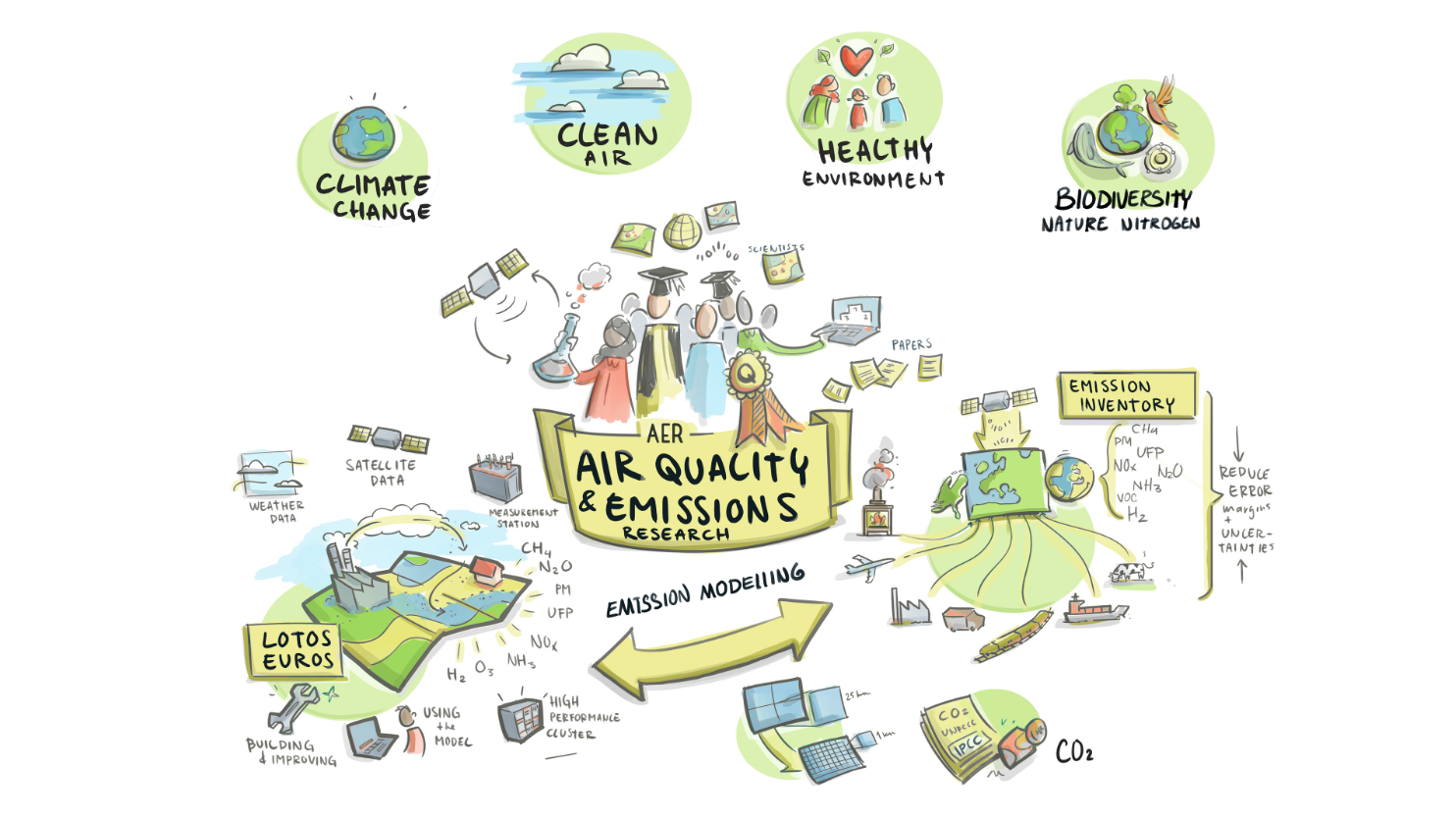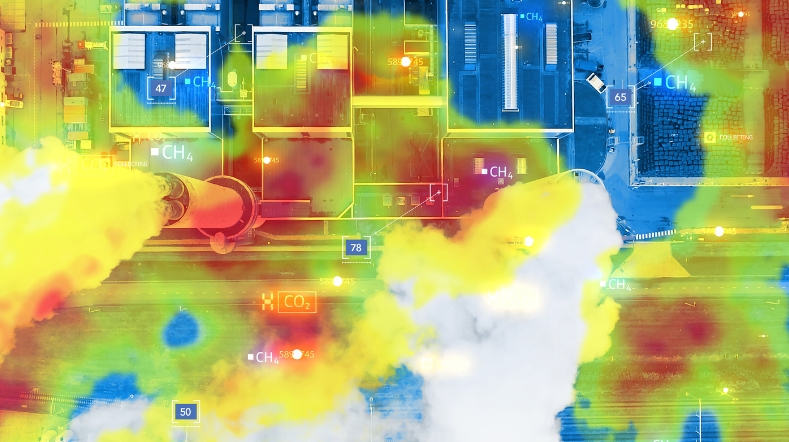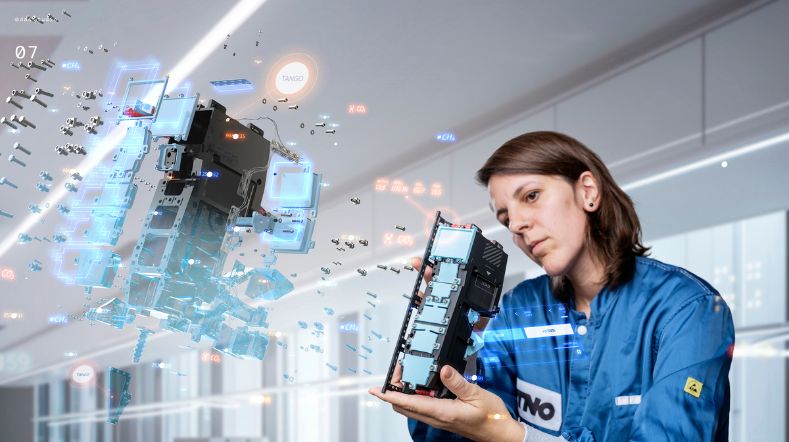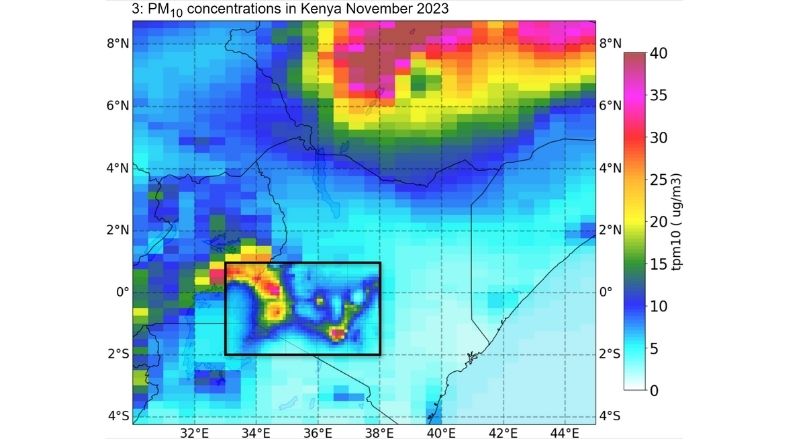
Air Quality and Emissions Research
Translating knowledge of emissions and air quality into advice and solutions regarding societal issues such as climate change, clean air for all, a healthy living environment, and biodiversity protection. That’s the mission of the Air Quality and Emissions Research Department, in which we take economic, social, and technological developments into account.
Climate change, air quality, and sustainability pose major challenges to policymakers, public authorities, the general public, and businesses. Our experts have in-depth knowledge of emission causes, emission reduction measures, atmospheric chemistry, and dispersion, among other things. We use this high-quality knowledge for monitoring, evaluating measures, and supporting policymakers and stakeholders on a local, national, and European scale.
‘Most 21st-century climate challenges have to do with the composition of our atmosphere. Economic activities, often within sectors such as energy, agriculture, and transport, contribute to this. Where greenhouse gases lead to climate change, exposure to air pollution causes serious health problems. In addition, the deposition of nitrogen from the atmosphere leads to eutrophication, resulting in a decline in biodiversity.’

Today's climate challenges are linked to clean air, a healthy environment, and biodiversity. Air quality and emissions research consists of two complementary aspects. First, detailed knowledge of emissions and underlying causes is necessary, which is then used in a transport model (LOTOS-EUROS) to determine concentrations, dispersion, and deposition. Comparisons with measurements can provide insight into the accuracy of the emission input.
Grip on greenhouse gases
Climate change is a major societal challenge, and time is running out. To tackle the problem at the source, it’s necessary to reduce greenhouse gas emissions. This must be done at all scales, from regional to European to global. To make policies as effective, smart, and sustainable as possible, detailed knowledge of the concentrations and emissions of greenhouse gases such as CO2, methane, and nitrous oxide is needed.
Using models, local measurements, and satellite imagery, we're getting a grip on emissions and dispersion. We seek to understand, monitor, improve, and learn from national reporting of emissions. We also use satellite imagery to identify major sources worldwide, for example. For instance, we mapped the Nordstream leaks and identify methane hotspots.
Clean air for greater health gains
Living, work, developing, and recreating: We do it all in one small area and often close together. For instance, we drive to work in our cars, light the fireplace in the evening, and the nearby industrial estate generates emissions. Emissions from such activities lead to pollution of the air we breathe, which has negative effects on our health.
What is the exact origin of these emissions? How do these substances disperse in the atmosphere? What other gases and particles are created by chemical reactions between them? And where can we take the best measures to achieve the most health gains? We're trying to answer these questions by mapping out emissions in detail, in residential areas, for example, by tracking emissions at high resolution and with breakdown by source.
If you're curious about the current air quality in your region and what the biggest air pollution sources are, please take a look at our TOPAS NL website.
Nitrogen crisis
The Netherlands has been in a nitrogen crisis since 29 May 2019. Too much nitrogen is being emitted by various processes, and this is partly deposited on protected nature in the Netherlands. This is nothing new. Many nitrogen-sensitive nature areas in the Netherlands are overloaded and no more nitrogen should be added if we want to preserve nature. Where exactly does all this nitrogen come from and how far does it spread? Which sectors, and to what extent, play a role in this?
Through source allocation, we're tracking atmospheric nitrogen emissions and modelling nitrogen deposition with our LOTOS-EUROS model. With this chain analysis, we offer science-based insights into cause and effect and aim to further help the Netherlands solve the nitrogen crisis.
Unique combination of emission review and modelling
In the Air Quality and Emissions Research department, we combine our knowledge of emission reviews with air quality modelling. The combination of both aspects under one roof makes us unique.
First, the emissions themselves. With knowledge of all sources generating emissions, we create overall emission overviews and gain insight into the main sources and where reduction measures have the most impact. We can also develop scenarios to achieve certain reduction targets. To use emissions for air quality prediction, they must be available spatially distributed and varying over time.
We combine country reports, measurements, and satellite images into emission maps at different scales depending on the research question. An increasingly important part of our work is independent verification of emission estimates with measurements on the ground or from space. This is complex because usually an emission cannot be compared 1 to 1 with an observation because of transport and chemical reactions in the atmosphere. To still be able to make the comparison, collaboration throughout the chain is needed. A good example is ‘Satellite reveals higher methane emissions Australian coal mines’.
Once the emissions are properly mapped out, they’re used as input for the LOTOS-EUROS air quality model. In addition to emission and weather data, such as wind, temperature, and precipitation, the model describes chemical reactions and other processes in the atmosphere, such as transport and precipitation/deposition. We do this from a detailed scale of 1 kilometre to the level of a continent. The model is used, among other things, for smog reporting in the Netherlands and air quality forecasts in 200 European cities.
Greenhouse gases, nitrogen, particulate matter, and other air pollutants lead to various societal problems, but are often interrelated both at the source and in the atmosphere. As a result, the search for solutions goes hand in hand and it’s important to avoid shifting from one problem to another. Within our department, the above knowledge is combined and applied to help you gain the right insights and determine options for action. For example, we’ve developed a 5-step approach for healthy air.
5-step approach for healthy air
Discover how to improve outdoor air quality for residents in 5 concrete steps.
Get inspired
Methane emissions in the North Sea Symposium
Tracking sources of greenhouse gases with satellites


This is our time: Eleonie van Schreven’s work on small satellites with a big impact


ATACH selects TNO model for climate-related health risks in Kenya


Vacuuming the highway to reduce environmental microplastics from tyres


